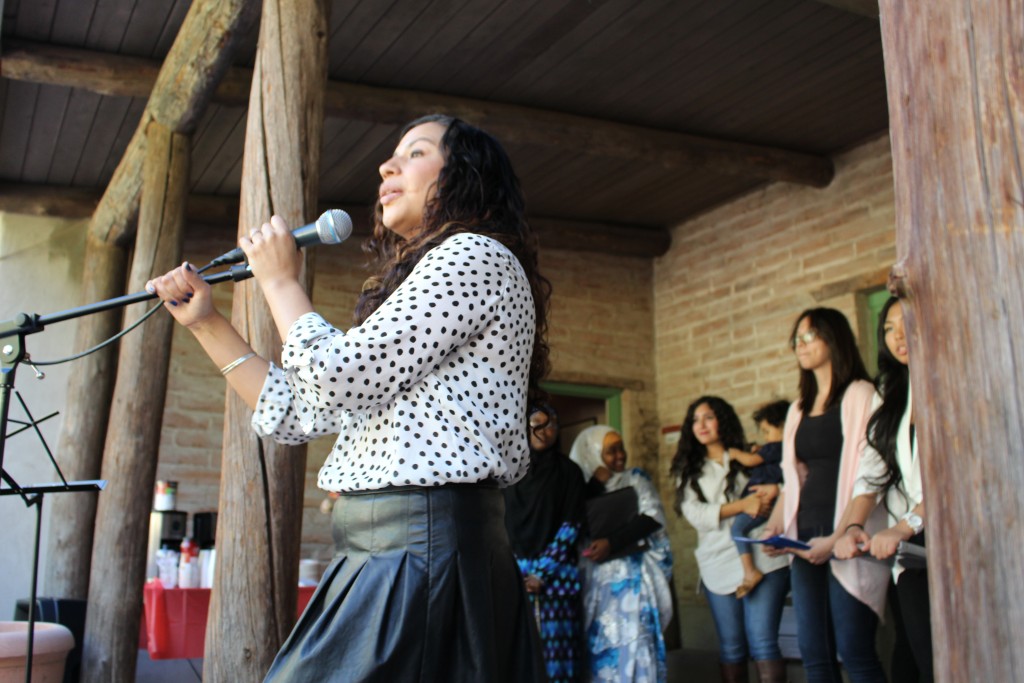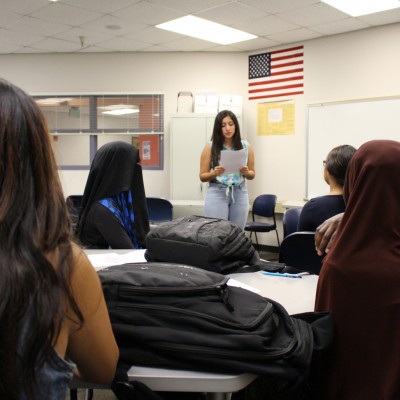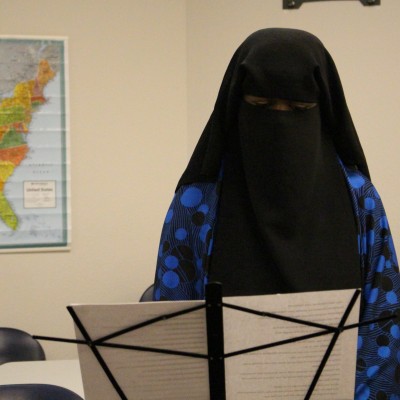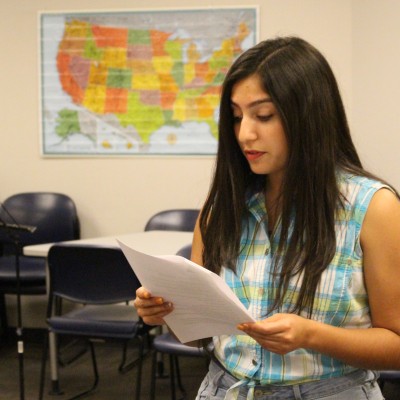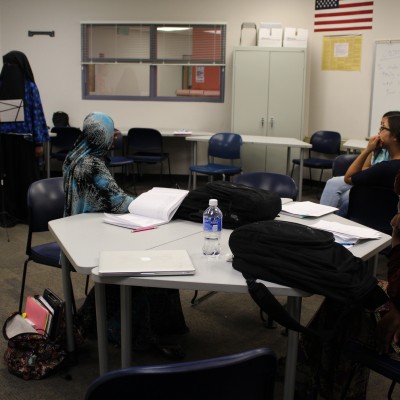Barrio Monologues
The Barrio Stories project consists of three phases: Research, Development, and Production. As project coordinator/class instructor, I was in charge of phase one, which we recently completed. This research portion of the project involved teaching a college level course, “Theatricalizing Oral Histories” to Trio Upward Bound (high school) students at Pima Community College. The class was tasked with interviewing residents of Tucson’s oldest barrio, situated in the downtown area and known by some as La Calle (the street), which was bulldozed in the 1960s in the name of urban renewal. The interviews were filmed and transcribed to become source material for three nationally recognized playwrights to develop into a script to be produced, site specifically, in March 2016. Under the direction of project manager Marc Pinate, Borderlands Theater’s producing director; and historian, Dr. Otero (whose book La Calle: Spatial Conflict in a Southwest City was the foundation for the project), I identified and reached out to potential interviewees, former inhabitants of lost neighborhood, as part of the logistical preparations for the class.
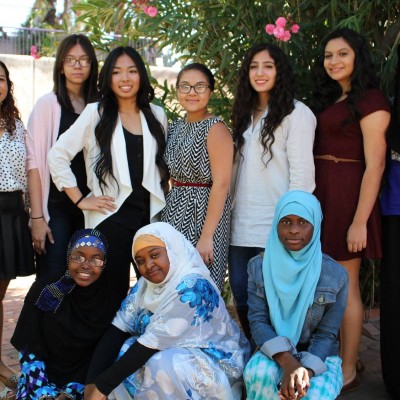 The theater class had lofty goals. I managed to scale down the curriculum to something feasible: a writing for solo performance class á la Ana Deavere Smith.
The theater class had lofty goals. I managed to scale down the curriculum to something feasible: a writing for solo performance class á la Ana Deavere Smith.
The class ran for twelve weeks. I ended up with 9 young women: four African Muslim, one of Cambodian decent, and four Latinas. The girls were mostly juniors and one senior. Although they got along well, it was interesting to see how they separated themselves by way of dress, the Muslims in traditional garb at one table and the Americanized students at the other.
I noticed the young women sit up straighter when we talked about their role in the project and what it meant to do the work we were about to embark. They took ownership. Although raised in Tucson, the Latinas were amazed they did not know that the oldest neighborhood in Tucson was once a thriving, predominantly Mexican Barrio. They quickly recognized the importance of uncovering and sharing this history. For the “newer” Tucson arrivals this fact didn’t seem to resonate as much.
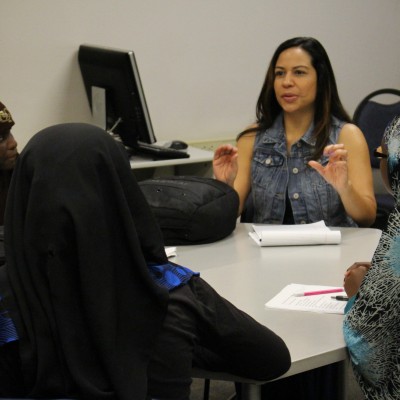 On our first class, we watched Ana Deavere Smith’s video, Young Artist Master Class. The students were intrigued by what Smith calls that “broad leap into the other.” As we discussed this idea, one bright student unpacked it by saying, “it’s so we can see what someone else sees.” “Cause we all see things differently,” another student said and on the conversation went. That broad leap into the other was a reference point throughout the class and became our guiding principle.
On our first class, we watched Ana Deavere Smith’s video, Young Artist Master Class. The students were intrigued by what Smith calls that “broad leap into the other.” As we discussed this idea, one bright student unpacked it by saying, “it’s so we can see what someone else sees.” “Cause we all see things differently,” another student said and on the conversation went. That broad leap into the other was a reference point throughout the class and became our guiding principle.
The students were both excited about the class and scared, freaked out by the idea of performing. Since they had no performance experience, we settled on a dramatic reading in front of an audience as their final. They reluctantly agreed.
In the following weeks, we also delved into the first few monologues of Ana Deavere Smith’s Twilight Los Angeles. The more Americanized students were enthralled in the material, excited to have a real conversation about the politics of race in America. I looked out the window, into the hall, a little paranoid that we were having this discussion, in Arizona, the state that banned Mexican American Studies classes and “certain” books in the Tucson Unified School District. I remembered this was a college class and these are the types of discussions people have here.
A University of Arizona graduate anthropologist facilitated two workshops on ethnographic fieldwork and interview techniques in preparation for the coming interviews. Each student partnered up with the anthropologist to interview elders about the vanquished neighborhood.
My lesson planning involved a lot of coordination and logistics. Some of the interview contacts were hard to get a hold of until I realized that it helped if I left a message in Spanish, perhaps this made me seem more trustworthy. I emailed/texted with students often to answer questions and keep them apprised of all that was happening. I made sure students had rides to each interview and drove them when necessary.
After each class, the students journaled on assigned readings and if applicable on their interview experience. This kept them focused and prepared them for the in class discussions.
We discovered that the downtown area, often referred to as La Calle used to be brimming with people walking through the daily routines of life. La Calle was the heart of the city stocked with shopping and entertainment: three movie theaters – including the Plaza Theater which played Spanish language movies; Ronquio’s Bakery; hot dog stands; ice cream parlors, restaurants; bars; nightclubs and La Placita park for festivals and special events. I drew a rough map in class for the students to get a better visual grasp of the area.
The students weren’t theater people but they were making big discoveries (with a little guidance) in class. During a discussion about one of the monologues from Twilight Los Angeles students began to notice the structure of the monologue – how the situation, character and place were revealed. They realized that, though each monologue stands on it’s own, when read in order they have more meaning and become more powerful.
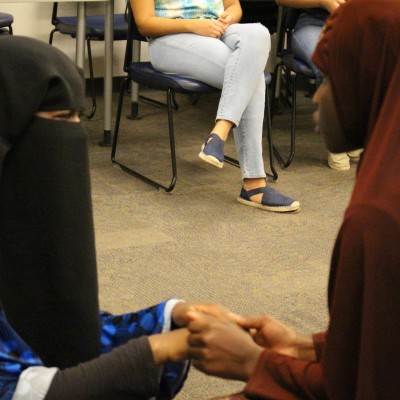 I reminded them that we are all storytellers. This was reinforced as they went out into the community and interviewed elders. The students would come back and say, “they had so many stories.” It was marvelous to see them appreciate the power of story as they worked on this project. They were taking everyday people’s stories and creating art, by the placement of things. I could see the lights going on in their heads especially as we discussed titles. How titles set tone, reveal theme, guide us to the meaning of the story. The best part was their excitement in realizing that they could do this with their monologue.
I reminded them that we are all storytellers. This was reinforced as they went out into the community and interviewed elders. The students would come back and say, “they had so many stories.” It was marvelous to see them appreciate the power of story as they worked on this project. They were taking everyday people’s stories and creating art, by the placement of things. I could see the lights going on in their heads especially as we discussed titles. How titles set tone, reveal theme, guide us to the meaning of the story. The best part was their excitement in realizing that they could do this with their monologue.
At first they weren’t sure how to sift through a forty-page transcription. I had to guide them a bit. Pick a theme or something you want to say with the monologue. How can you reveal place and character while telling us a story? How can you bring this neighborhood alive? The last few classes alternated between workshopping for writing and acting workshops facilitated by Marc Pinate. The last two classes were spent rehearsing the performance of the monologues. All the young women were nervous to perform in front of an audience.
On May 16, 2015 all nine students performed dramatic reading of their monologues to a packed house of over 100 people (many of them with ties to the old neighborhood) on the grounds of the only remaining house from La Calle, the Sosa-Carrillo-Fremont House Museum. The site is maintained by the Arizona Historical Society, which through this process has become yet another enthusiastic partner on this project. We were not expecting such a turn out! Many of the attendees at the event remarked how they always walked by the museum but had never been inside. They were proud to hear these monologues and take a collective breath to remember this history.
There was only one concern expressed about representing the diversity of the La Calle, which also included Chinese store owners. We have contacted the Chinese Cultural Center in Tucson to address this. Most of the feedback consisted of audience members’ gratitude for honoring their town. The audience left looking forward to the full production.
It was a fruitful event for all partners involved. The students confronted their fear of public speaking, and played a key role in preserving history and creative placemaking through theater. They pulled it off with total poise and stood 10 feet tall! During the Q&A, one student spoke about her Cambodian refugee parents and how she valued those stories of her parent’s country even more now. Another student said, “I’m able to speak up now—I know I have something to say. I feel proud of the history here. It’s my history too.” An African Muslim student told the audience, “I’m proud to wear my head dress because that’s my culture, just like my interviewee said, ‘you have to be who you are.’”

